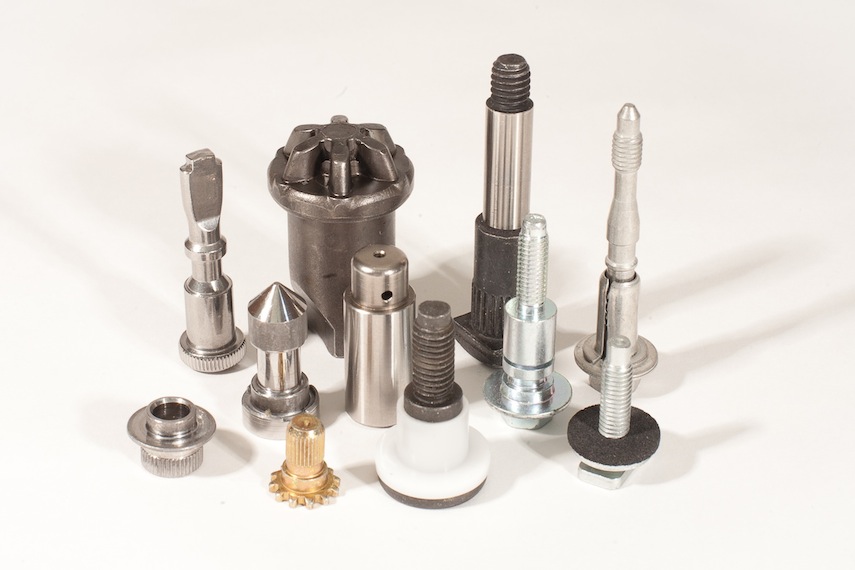
The Cold Heading process uses high speed automated “cold-headers” or “part formers.” This equipment has the ability of transforming a wire into an intricately shaped part with tight and repetitive tolerances using a tooling progression.
The Cold Heading process is volume specific and the process uses dies and punches to convert a specific “slug” or blank of a given volume into a finished intricately shaped part of the exact same volume.
Cold headed parts may also undergo other processes, such as extrusion, coining, trimming, hole punching, and thread rolling. Cold Heading is typically a high-speed process where the blank is progressively moved through a multi-station machine. The process is widely used to produce a variety of small- and medium-sized hardware items, such as screws, bolts, nuts, rivets, and specialized fasteners. Cold Heading is used to produce automotive components, such as gear blanks, ball studs, piston pins, sparkplug shells, valve spring retainers, engine poppet valves (intake and exhaust), and transmission shafts.
Cold Heading advantages over machining the same parts from bar stock include:





